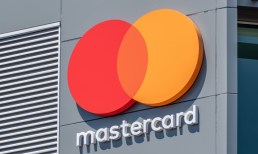After many years as a holdout in the world of near-field communication (NFC) payments, Target grabbed a lot of headlines yesterday (Jan. 22) with its announcement that it is embracing contactless payments. Target will enable this feature at checkout at all 1,800 of its U.S. stores over the next several weeks.
This marks a change for Target — a retailer that had, up to this point, enabled mobile pay only for its own mobile wallet app and the Target-branded REDcard linked to it. Next week, shoppers at those 1,800 stores will be able to use contactless cards, as well as contactless mobile payments, via any one of the mobile wallet “Pays” — Apple, Google and Samsung.
“Offering guests more ways to conveniently and quickly pay is just another way we’re making it easier than ever to shop Target,” said Mike McNamara, Target’s chief information officer, in a statement.
The headlines have mainly focused on the “Pays,” which have struggled to gain any significant contactless traction at the physical point of sale (POS). However, when Karen Webster chatted with VP of Consumer Products Dan Sanford, he noted that what has been a bit underreported is the giant leap forward contactless cards will take, now that Target will accept tap-and-pay payments.
Target’s acceptance of contactless payments, Sanford told Karen Webster, is a “a great win for the industry,” one that he thinks will nudge other competition-minded retailers into activating contactless acceptance at checkout, too.
Creating Contactless Momentum
For the How We Will Pay 2018 Edition, PYMNTS and Visa conducted its annual study of U.S. consumers about the connected devices they own, how they use them to buy things and how they want to use them to buy things going forward. In the study, two things became obvious.
The first was that convenience drives how consumers pay, and how they make their choices of how they will pay.
The second was that, when paying in a physical store, speed is just as important as convenience. For many consumers, that means having a contactless payment option available. Sixty-five percent of the 2,800 consumers surveyed last year said they would be interested in using contactless payments to check out in the physical store because it is faster, and 60 percent said they are interested because it is more convenient.
Where consumers see the value is, interestingly, the sweet spot where Target plays. Eighty-four percent of those consumers who said they’d be interested in using a contactless payment experience would like to do so at large merchants and grocery stores.
“That is consistent with what we have seen around the world when it comes to contactless card adoption,” Sanford said. “Grocery, retail, transit and QSRs — those tend to be the spaces that help to accelerate adoption.”
Target, he noted, has the potential to change the contactless acceptance game by using it as a competitive advantage in a competitive space. If ease and convenience drive consumer payment preferences, and contactless delivers both in categories where consumers visit the physical store frequently, contactless acceptance can be promoted as a value-added part of the consumer shopping experience.
Sanford said it also serves as “another loud drumbeat” to issuers to put more contactless cards in the market. He added that Chase’s late 2018 announcement that it was moving its Visa portfolio to contactless cards (and that it would have 100 million of them in market by the end of 2019, Sanford noted), followed by PenFed Credit Union’s announcement earlier in the week, are proof points that issuers are serious about adding contactless capabilities to their cards. The ability for their customers to use them at large merchants like Target adds another bullet point to that business case.
The U.S., according to Sanford, unlike every other market in which contactless has entered, has the technology enabled on the merchant side. The trick is getting cards into people’s hands so they can start to use them. Once those consumers have those cards (in their wallets) and start using them, not activating the contactless capability on the merchant side will become a competitive disadvantage. That, he said, will spur continued momentum on the issuing side.
“We are confident you are going to see many issuers coming around,” Sanford added.
Cards Hold The Keys To Getting Contactless Technology Off The Ground
Mobile wallets tend to get a lot of focus when it comes to contactless payments. Yet, when it comes to attracting consistent committed users by the numbers, there is still a lot of ground to cover. The problem, Sanford told Webster, is that once one gets past the enthused early adopters, one runs into the reality that “my grandmother is probably going to be hard to convince to put her card into a mobile wallet, and use it in the store.”
However, he noted, his grandmother, like every other consumer with a card, is eventually going to get a new card sent to them in the mail. That means cards are probably the best form factor for putting contactless technology into consumers’ hands. Even in Europe, Sanford said, where there is nearly universal mobile acceptance, it is still the contactless card that consumers use to pay. Consumers trust cards to work, and they know how to use them.
“It’s so much easier to put contactless in a customer’s hand with the card,” Sanford explained. “We believe that [cards] are what will really drive the [contactless] technology forward.”









